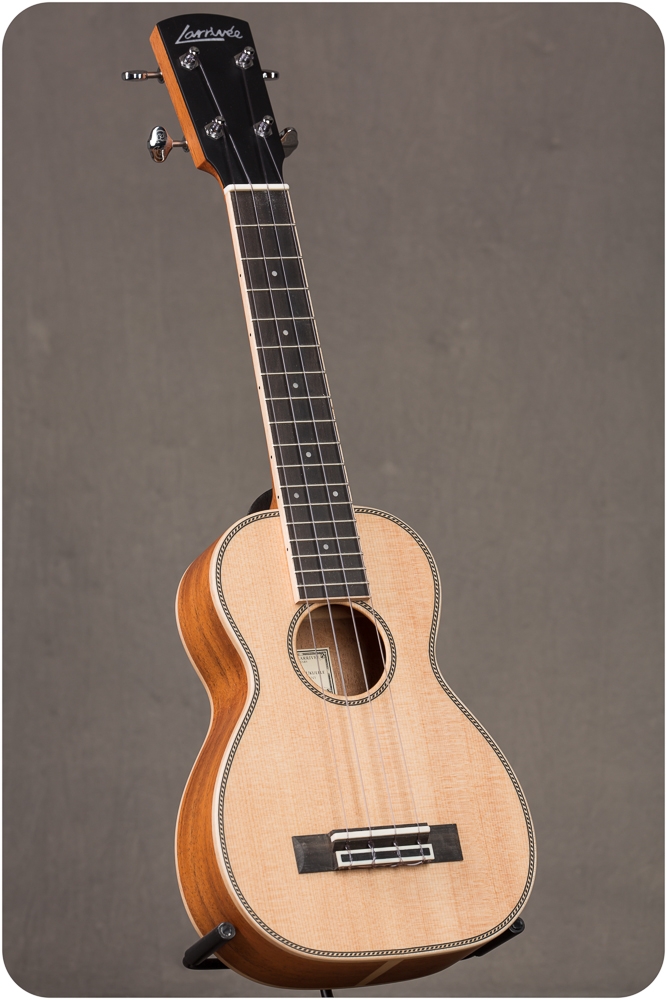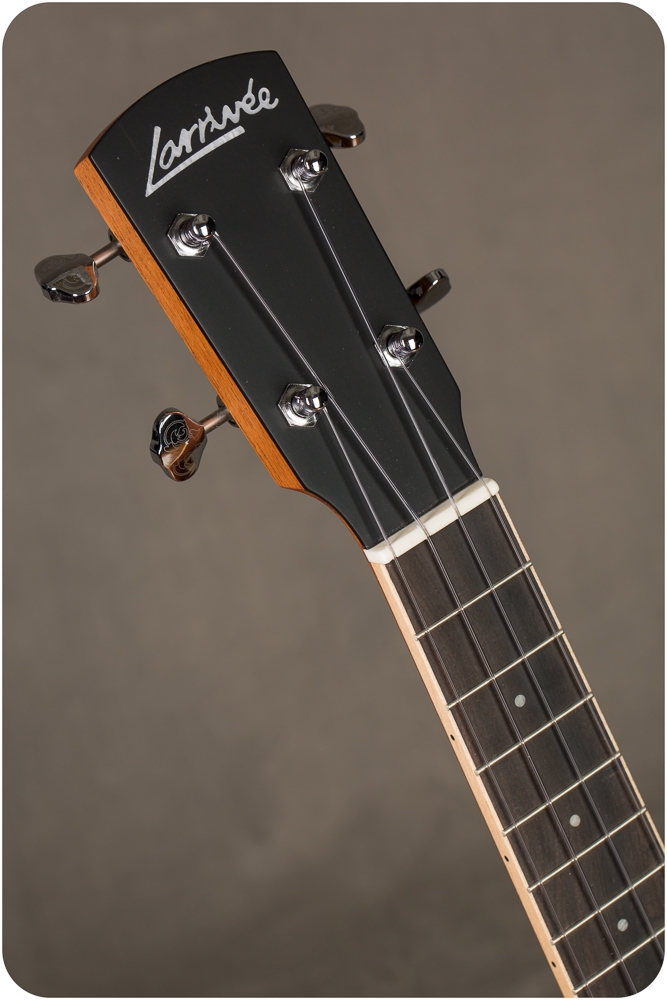The weird thing is that Larrivee isn’t really all that well-known in the uke world. It’s strange when you look at the quality of the instruments, but my money is on the fact that Larrivee is mainly associated with guitars and has been since Jean Larrivee opened up his first commercial site in 1970. They’ve been known for decades for making high-quality guitars with exquisite inlay work and an ear toward fantastic tone woods that Jean Larrivee is STILL exploring the world to find. The company doesn’t have nearly that same experience with ukes.
But that’s no big deal because their name will permeate the ukulele world! I mean, look at this beast! It has all solid woods, a bone saddle and nut, open-back Grover tuners, a wide strip of maple binding, and marquetry rosette and purfling. The top is sitka spruce while the back and sides are mahogany. While this isn’t the traditional koa or acacia that most people think of when they think ukuleles, ukes have been made for decades out of mahogany and there’s a definite reason for it. The tone is smooth, but snappy, leading to pleasantly whole-sounding chords with the ability to pick out melodies and not have them drowned out. The tone is great and made it very difficult to put down long enough to write this review. I could strum this all day. The sound of the uke and the ease of playing it make for a great combination.
Oh, right. I haven’t talked about the construction yet. Well, like I said, the woods are all solid and the nut and saddle are bone. The neck is mahogany for tone and strength, and the fingerboard is a jet-black ebony that you can tell is going to shine after a while of playing. The frets are smooth and easy to get around on – something that is made even easier by the fact that the finish on the whole ukulele is a fast satin.
The bridge is a tie-bridge, but not of the traditional variety. You tie a knot in the string, then pull the string through the bridge slot. This is similar to most guitar bridges, but you’re effectively making your own ball-ends by tying your own knot. I don’t mind this at all since the look is very clean and you’re still able to use traditional strings.
I have two favorite things about this ukulele that I wanted to share: The tuners, the Grover open-backs that I mentioned before, have this lovely engraving on them that is so subtle that the only person that would probably notice it is the player, but I like that. It’s like a nod, not to the audience, but to you the strummer and that small touch is just really cool to me.
And, while Larrivee started out in Canada, he ended up in California and that is where this ukulele was made.
So what kind of price are you looking at for an ukulele like this? On The Ukulele Site, it goes for $787 for the soprano model. I’ve heard some potential complaints about sopranos costing so much since the seemingly-logical line of thought is smaller=less expensive, but I think when you compare it to other US-made ukuleles, the price looks really good. When you compare the tones of those same ukuleles it starts to look better, and when you finally play it, it feels like a steal.
If you have been dismissing Larrivee because they’re not all that associated with the instrument of the islands, you should revisit them and give them a shot. These are pretty great ukes!







Comments 2
Thanks for a great review. Looks like this one is a bit larger than other sopranos, is that correct? Do you happen to know what the nut width is?
Love this review. To be honest, when I started to play the ukulele in 2002, my first (and only) real instruction was ‘the complete ukulele course’-dvd by Ralph Shaw. He played a Larrivée there. The design of the headstock was a little bit different. Btw. A soprano is maybe even difficult to built just because of it’s size.